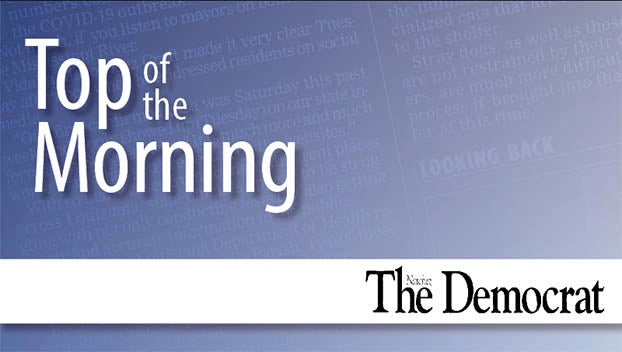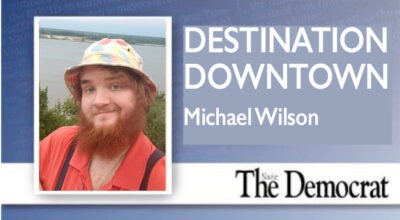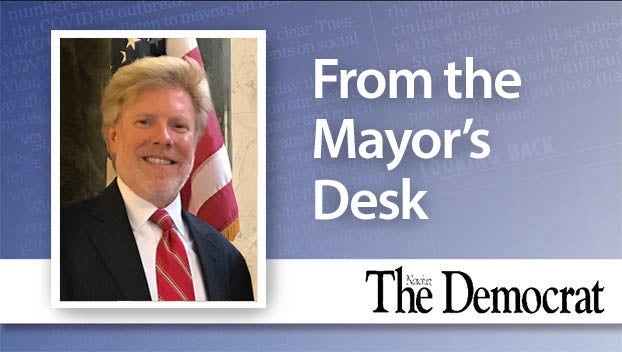Destination downtown: Traffic flow, why one-way or the other when you can have both?
Published 12:01 pm Friday, March 8, 2024
|
Getting your Trinity Audio player ready...
|
When it comes to traffic flow in Downtown Natchez, why have it one-way or the other when you can have both? That’s what the city’s Downtown Master Plan recommends: explore converting the busiest streets back to two-way while retaining one-way on the narrower secondary streets.
Specifically, the plan recommends hiring a traffic engineer to explore the conversion of Main, Franklin, Pearl, Commerce and Broadway Streets back to two-way traffic flow, and replacing one or more traffic signals with four-way stops.
The big question is “Why?”
For me, as Community Engagement Coordinator for the Downtown Natchez Alliance (DNA), I get to delve into the big “why” behind the “what” of the city’s official Downtown Master Plan, which in part guides the work of DNA.
The city’s Downtown Master Plan represents the collective efforts of more than 300 community members as well as city leaders across three administrations. Like Mayors Brown and Grennell before him, Mayor Gibson and his current administration have worked diligently and successfully to move the plan forward.
The city’s decision to engage Volkert Engineering to conduct a traffic study to investigate the plan’s mobility recommendations and other options is great example of forward motion.
Back to traffic flow, the plan’s recommendation to reinstate some two-way streets isn’t a mere change in direction; it’s about reinvigorating our downtown.
Historically, downtown streets across the nation were designed for two-way flow. In the mid-20th century, many were converted to one-way to prioritize vehicle speed and efficiency. This decision, now largely recognized as a misstep, often led to decreased downtown vibrancy and increased safety concerns.
In his 2018 book, Walkable City Rules, planner Jeff Speck writes there was a time when all city streets were two-way, but between 1950 and 1980, Speck documents an “epidemic” of conversions to one-way streets in cities all across America. Speck writes that mostly these conversions greatly damaged downtowns by killing off retail and turning city streets into, essentially, surface highways.
The Downtown Master Plan outlines the benefits of two-way traffic and stop signs:
· Lower driving speeds enhance safety for both pedestrians and motorists.
· Increase retail visibility as slower traffic allows drivers more time to notice and access businesses.
· For visitors, two-way streets simplify navigation, making our city more welcoming.
· Avoiding “out of trip” driving (or having to make the block) to save time and fuel.
As for truck unloading, a challenge often associated with two-way streets, the plan proposes the possibility of designated on-street loading zones and enhanced alleyway systems to facilitate deliveries.
Finally, the plan suggests that two-way conversion of streets would entail no physical improvement costs beyond changes to traffic signals, signage and asphalt paint striping.
This vision for two-way traffic isn’t just about changing how cars move through Downtown Natchez. It’s about altering the rhythm of our city streets to create a more pedestrian-friendly, economically vibrant, and inviting downtown.
New data can alter viewpoints. We are fortunate to already have on the table a set of well-considered, professional recommendations, the result of two years of study and city and community engagement, as a starting point for the new traffic engineering study.
By moving forward with this traffic study, Mayor Gibson and the board of aldermen demonstrate that they realize the importance of this research. They demonstrate a willingness to improve on that which is already good, and this is how ‘good’ becomes ‘great’.
Whatever the conclusion of the study may be, we can all take pride that we are continually seeking to grow, learn, and better our beautiful downtown.
Michael Wilson is the Community Engagement Coordinator for the Downtown Natchez Alliance (DNA). He can be reached at Downtown@NatchezDNA.org.





